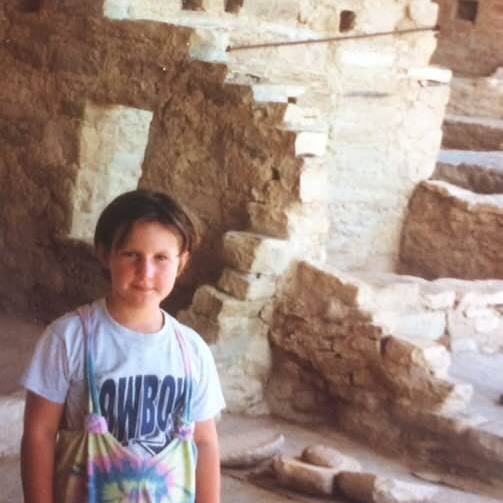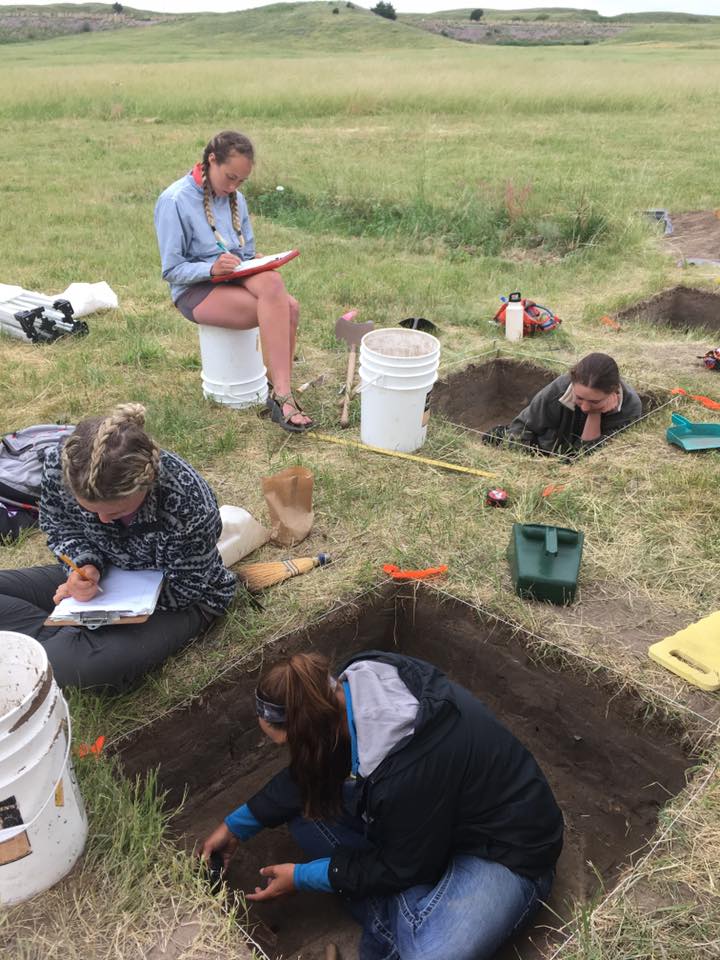- Home
- >
- Preservation Archaeology Blog
- >
- On Archaeology: Sara Anderson
Here is the latest essay in our “On Archaeology” series, in which some of our staff reflect on what they thought archaeology was, how they see it now, and what they think archaeology should be or could be. Updates will continue almost every Friday through the end of the year.
Sara Anderson, Archaeology Southwest and Tonto National Monument (Post-Woodberry Fire Restoration Archeologist)
(December 3, 2021)—Truthfully, this is the second draft of my anthropology origin story and, I believe, a more honest narrative.
When I was first invited to participate in this blog series, I immediately sat down and wrote my simplified go-to script of my journey with archaeology. This story is one I have used to shield myself from confronting some of the difficulties I’ve faced while navigating this relatively small field. After reading through Abby Thomsen’s and others’ thoughtful posts, I decided to dig a bit deeper (no pun intended). Even though I am still learning about archaeology as a discipline and how it could be better for all, here are some experiences of how archaeology has shaped me into who I am today.
The previous blogs in this series have done a great job highlighting how archaeology, as a discipline, has historically kept certain people out. Each essay has resonated with me, and has pointed out how lucky I am to be part of a community that is willing to openly share its points of view and deep knowledge of archaeology while also questioning the status quo.
It is important that I first acknowledge my privilege. As a white person in America who grew up in a middle-class family with two scientists for parents, I was encouraged—to say the least—to attend college and to pursue a rewarding career regardless of economic prowess. My dad is an archaeologist who worked as a Cultural Resource Management Specialist for over 30 years in Iowa, so I have also been privileged in terms of resources and professional connections in the field, for which I am so grateful.
I have childhood memories of asking my dad, over and over, what it was he did for work. I never fully understood his answers, so I took “work in the field” to mean he was a farmer. As I grew older and learned that he was not, in fact, a farmer, I was encouraged to develop my interests and surrounded by scientific inquiry. I began my archaeological adventure at 18, knowing (as so many of us did—you know who you are) that I was destined to be an Egyptologist— an interest I developed around age 10 when I gave my first presentation on archaeology to my 6th-grade class.

Even though I was so sure of my plans after graduating from my K–12 career, it just did not stick. I bounced around during my undergraduate years, first studying to be a biological archaeologist, and then a Great Plains archaeologist. During my undergrad courses at the University of Iowa, I often struggled with professors and teaching assistants assuming a level of understanding that I did not have just from being raised by an archaeologist—as though somehow, his anthropological knowledge and experiences would have simply downloaded into my brain at birth. I spent lots of nights and weekends backpedaling to learn the jargon and the acronyms—a different language, as Skylar Begay described so well in his post.
My first professional experiences in the world of archaeology were a plethora of unpaid volunteer labor opportunities, as Karen Schollmeyer’s post highlighted. I worked full-time at customer service jobs to support my night and weekend work in labs in order to prove myself as a competitive prospect for future opportunities. Although I was able to maintain this for a while, it did take a toll on my mental health. I entered my master’s program three years out from my BA without ever securing a paid job in archaeology. I could not even find work as a shovel bum, and now, on the other side of that, that fact is astounding to me.
At the University of Nebraska-Lincoln, I found my first paid archaeological job nine years after I began my collegiate career in anthropology. This fact and various other rejections and interactions built a belief in my mind that I was not worthy of this profession and that all I could bring to the table were the very basics. I struggled—and still do, at times—to see my value as an archaeologist and to prove my worthiness among the archaeological giants I looked up to.
It was not until I took a Southwest Archaeology class with Dr. Carrie Heitman that I began to feel like I belonged. Archaeology was no longer a place where I broke myself into pieces and tried to jam them into alignment, but one that could hold a space for me entirely. Dr. Heitman later became my advisor. She showed me a side of archaeology that called out biases and discrimination built into this discipline through her work in gender and social inequality. Under her direction, I attended the 2018 American Anthropological Association (AAA) meeting.
A standout for me, even amid all the pioneering work discussed at these meetings, was a statistics board delineating the ratios of men to women in academic anthropology. The specific numbers elude me now, but the chart showed that there were roughly six women to every one man graduating with Anthropology bachelor’s degrees, around three to one for master’s degrees, and an almost one to one ratio of women to men doctoral graduates.
What prevents women from moving through the academic track into master’s and doctoral programs? Do these women completely abandon the profession, or do they stay involved in other anthropological arenas? These are just some of the questions related to these statistics I still think about today.
These data made me reflect on the barricades I had faced in my career track. I remember, while studying to get my MA, sitting down with two male professors I had worked with closely and asking if I should go on to get my PhD, to which they both quickly responded with a resounding “no.” Although I like to think this response was more about their experiences and feelings about academia in general and less about me being a woman, I do wonder whether one issue is that women ask how to be a part of the discipline, and men do not.
While in academia and participating in volunteer student-based crews and field schools, I worked primarily with other women students. These robust women-based crews were no longer the norm once I gained permanent employment. The Cultural Resource Management (CRM) firms I have been a part of are very much still male-dominated. On one specific job, I was the only woman to go routinely on field projects. Often these projects felt isolating, and there were various basic needs issues I was left to manage on my own. How to be a woman in this field, let alone how to be the only woman on a crew full of men, was not a part of my curriculum.

I am using my own experiences and mental health struggles as evidence that there is still work to be done within our discipline. Unfortunately, my experiences are probably not the exception—as that 2018 stats board indicated—and women leave academia (and perhaps the discipline as a whole) after each degree at much higher rates. It is important to ask why that is to ensure that the discipline is not continuing to keep people out.
As anthropologists, distancing ourselves from the humanity we study can be appealing. Yet we must never forget we are a community unto ourselves. And this community requires introspection and work, just as all human social spheres do. I am fortunate to be where I am today working with Archaeology Southwest and the National Park Service with men and women who are incredible mentors and friends. This work, specifically elevating women in archaeology, motivates me to persevere. Finding female colleagues, friends, and mentors has inspired me to hold space for myself in this profession that I had been striving to be a part of for a decade.
The question of how to include diverse and traditionally excluded people at the table seems to be an ongoing conversation at Archaeology Southwest, and the staff here are very passionate about considering the issue and finding solutions. Although the discipline has many unanswered questions and requires a plethora of changes, I am encouraged to continue to be a part of this community, and I am hopeful others who have felt discouraged in the past will be, too. For me, archaeology has always been about listening and learning. I am excited to keep listening and keep learning, and I encourage others to do the same.